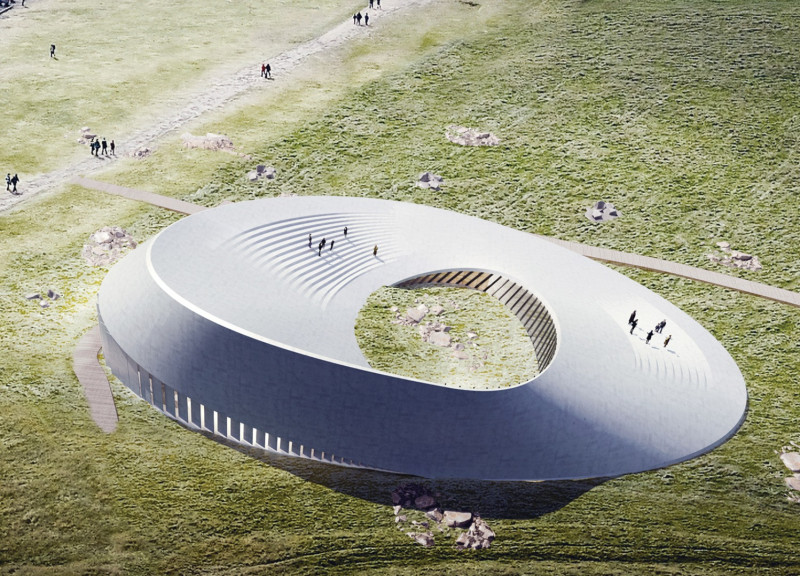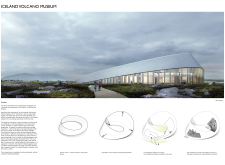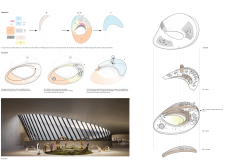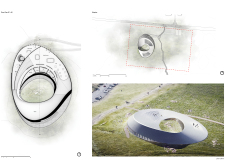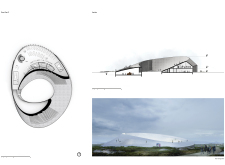5 key facts about this project
The museum encompasses several key functional areas. The entrance and lobby serve as the primary access point, featuring a reception area and a small café. The exhibition galleries are specifically designed to accommodate various displays on volcanic geology, including interactive elements that engage visitors. Additionally, office spaces for staff are strategically placed to minimize disruption to public areas, allowing for effective operational functionality.
The spatial organization of the museum promotes an intuitive flow, encouraging visitors to navigate through the exhibits in a manner that reflects the natural movement found in the landscape. The architectural layout employs circular pathways throughout the galleries, creating a sense of continuity and enhancing the overall visitor experience.
Natural materials play an important role in the project's identity. Concrete is utilized for structural components, providing durability and a raw aesthetic that echoes the surrounding terrain. The extensive use of glass in the façade creates visual connections to the external environment, allowing ample natural light to illuminate interior spaces. Wood accents are employed in furniture and finishing details, adding warmth and a tactile quality that contrasts with the more austere concrete elements.
An important aspect of the design is its unique integration with the landscape. The building's form is an organic extension of the topography, characterized by fluid curves that mimic the geological formations of the region. This integration not only enhances aesthetic appeal but also helps minimize the environmental impact, allowing the museum to coexist harmoniously within its natural setting.
In addition to its architectural features, the museum incorporates sustainable design practices. By utilizing natural light and passive heating and cooling mechanisms, the building reduces its environmental footprint while enhancing visitor comfort.
For those interested in understanding the full scope of the Iceland Volcano Museum's architectural design, exploring the architectural plans, sections, and detailed visuals will provide deeper insights. Reviewing these elements allows for a comprehensive understanding of the innovative ideas that define this project.


